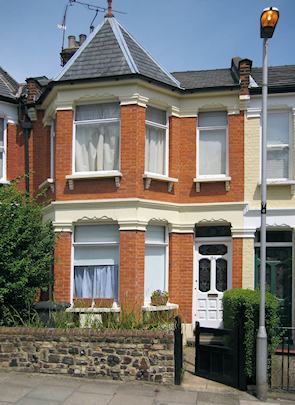Alexandra Park
Alexandra Park, Haringey
A hillside public park in the grounds of Alexandra Palace and the late Victorian and Edwardian residential locality to its north

This was part of Tottenham Wood until most of the trees were cleared in the late 18th century and the land was turned over to farming. After the death of Thomas Rhodes in 1856, his Tottenham Wood Farm was sold to become the site for Alexandra Palace and its 180 acres of parkland. Over the course of its existence the park has had a swimming pool, athletics ground, horse-racing track and dancing and banqueting facilities at Blandford Hall.
In the early 1880s the London Financial Association acquired much of the northern part of the park for residential development. Unlike the effect of Crystal Palace on Sydenham, the nearby presence of a great exhibition hall failed to inspire potential homebuyers and it was not until the end of the century that plots began to sell with any rapidity. The Rhodes family’s former home at Tottenham Wood House survived at the junction of Alexandra Park Road and Albert Road into the 1890s. After 1901 the consortium of local authorities that had acquired Alexandra Palace sold more land and the area filled with streets of well-built, red brick terraces over the next decade.
Although out of fashion for a period after the Second World War, when some of the properties were allowed to deteriorate, Alexandra Park has now become a desirable place to live – but still a little more affordable than neighbouring Muswell Hill. Many homes have been restored to a high standard, with the retention of period features.
By Haringey’s standards, the Alexandra ward’s ethnic profile is exceptionally white (60 per cent of residents are white British and the next largest groups are whites from various other parts of Europe), and levels of employment, academic qualifications and owner occupation are high.
The surviving part of the original park is recognised as the borough’s most ecologically valuable site, with meadow, scrub, formal parkland and a lake. There is a conservation area in the south-east corner, next to the reservoir, with mainly ash woodland and some mature oaks that were part of Tottenham Wood. Blandford Hall burned down in 1971 and birch trees now dominate its site.
